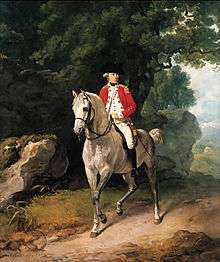Henry Pigot
General Sir Henry Pigot GCMG (1750 – 7 June 1840) was a British Army officer.
Sir Henry Pigot | |
|---|---|
 Sir Henry Pigot | |
| Born | 1750 |
| Died | 7 June 1840 London |
| Allegiance | |
| Service/ | |
| Rank | General |
| Awards | Knight Grand Cross of the Order of St Michael and St George |
Military career
Born the son of Admiral Hugh Pigot, Pigot was commissioned as a cornet in 1769.[1] He served in the Netherlands in 1793 and, following the Siege of Malta, accepted the surrender of Valletta from the French forces under General Claude-Henri Belgrand de Vaubois in September 1800.[1] He went on to be Civil Commissioner of Malta in February 1801.[2] As civil commissioner, he accepted the demolition of the majority of the fortifications of Valletta, but this act was never done and the city walls survive largely intact to this day.[3]
Pigot was colonel of the 82nd Regiment of Foot (1798–1836) and then of the 38th Regiment of Foot (1836–1840).[1] He was promoted full general on 1 January 1812 and appointed a Knight Grand Cross of the Order of St Michael and St George in 1837.[4]
References
- Oxford Dictionary of National Biography
- World Statesmen
- Bonello, Giovanni (18 November 2012). "Let's hide the majestic bastions". Times of Malta. Retrieved 5 October 2014.
- The Peerage.com
| Political offices | ||
|---|---|---|
| Preceded by Sir Alexander Ball |
Civil Commissioner of Malta February 1801 – July 1801 |
Succeeded by Charles Cameron |
| Military offices | ||
| Preceded by Hon. Sir Charles James Greville |
Colonel of the 38th (1st Staffordshire) Regiment of Foot 1836–1840 |
Succeeded by Sir Jasper Nicolls |
| Preceded by James Stuart |
Colonel of the 82nd (The Prince of Wales's Volunteers) Regiment of Foot 1798–1836 |
Succeeded by Sir John Wilson |